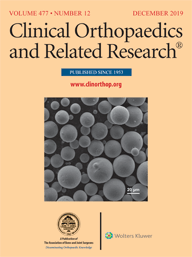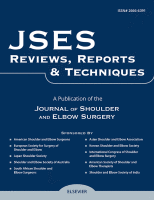

Publications
Validation of Shoulder Range of Motion
Shoulder range-of-motion (ROM) assessment is vital for the follow-up evaluation of operated patients and for the outcome-based research studies. The aim of this study was to investigate the accuracy and reliability of a remote on-screen application (app)-based method of shoulder ROM measurement through a telehealth medium.
Although the classic open Latarjet has a low recurrence rate in unstable shoulders, this advantage may be offset by the higher number of complications. We aimed to report the safety-driven nuanced steps and the resulting short-term complications of the Latarjet-Walch technique.
Skeletal Fluorosis with Thoracic Myelopathy - Report of 2 cases
To report 2 different presentations of thoracic myelopathy with ossification of ligamantum flavum (OLF) due to fluorosis.Different presentations and causes of myelopathy due to OLF should be recognized and treated. An unstable injury is very rare and should not be missed.
Step by Step guide to set up 3D Printing services for Orthopaedic applications
This article is written with an aim to provide step-by-step instructions for setting up a cost-efficient 3D printing laboratory in an institution or standalone radiology centre. The article with the help of video modules will explain the key process of segmentation, especially the technique of edge detection and thresholding which are the heart of 3D printing.
No Difference in Outcome Scores or Persistent Instability After Latarjet Procedure for Anterior Instability in Patients With Shoulder Hyperlaxity Versus Those Without Hyperlaxity
The prevalence of hyperlaxity in patients with shoulder instability is high, and its management is challenging. Shoulder hyperlaxity denotes a redundant anterior capsule with an elongated or weak glenohumeral ligament that may be associated with worse functional outcomes after procedures for instability. The functional outcomes and postoperative recurrence after a Latarjet procedure for recurrent instability in shoulders with hyperlaxity versus those without hyperlaxity has not been studied.
The primary purpose was: (1) to compare the coracoid graft resorption after the Latarjet procedure in patients without preoperative glenoid bone loss versus those with more than critical glenoid loss. The secondary purposes were (2) to compare the functional outcomes and (3) to investigate the association of graft position, angle of the screws, preoperative glenoid defect, age at surgery, and smoking status with the graft resorption.
Novel Method of Calculating Roof Arc Width
Roof arc angle (RAA) is determined by measuring angle between a vertical line drawn from center of the acetabulum towards the acetabular dome and a second line drawn from center of acetabulum to the fracture through the acetabulum. The main purpose of the study is to calculate patient-specific angle and width for the better evaluation and management of acetabular fractures.
Improvising the Surgical helmet - 3D Printed
The aim of this paper is to describe the process of designing and developing a mould for filter placement via 3D printing on top of the surgical helmet. This mould was designed to affix a filter material on top of the helmet system for use during the COVID - 19 pandemic.

Sub-Acromial & Sub-Coracoid Bursitis - Book Chapter
Shoulder pain commonly affects individuals across a broad spectrum of age and varying degrees of physical activity. Structures within the subacromial and subcoracoid spaces are responsible for many such shoulder pathologies, ranging from bursitis to impingement. Although subacromial and subcoracoid impingement may occur independently, these conditions frequently coexist with other pathologies such as rotator cuff tears, glenohumeral arthritis, or biceps tendinitis, thereby complicating the clinical picture.
Artificial intelligence in the interpretation of upper extremity trauma radiographs: a systematic review and meta-analysis
Upper extremity fractures represent a significant reason for emergency room visits; however, nonexpert readings commonly lead to diagnostic errors, particularly missed fractures. Artificial intelligence (AI) has emerged as a promising tool to aid in fracture detection, but it has been shown to be comparable to physicians at best, so it remains unclear whether there is value in its increasing implementation. This review aims to analyze the existing literature on AI in the identification and interpretation of upper extremity fractures on x-ray and to assess the diagnostic performance of such AI models.






